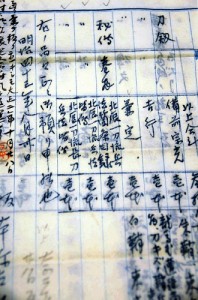Sakamoto Ryoma’s level of expertise with a sword has long been a topic of debate among historians, writers and so-called “Ryoma fans” throughout Japan. That he was an accomplished swordsman has never been questioned. He practiced the Hokushin-Itto style of kenjutsu at Chiba Sadakichi’s school in Edo for several years, receiving the respectable rank of mokuroku. But he famously used a pistol to defend himself during an attack by Tokugawa police at the Teradaya inn in Fushimi in early 1866. And less than two years later, he was assassinated at his hideout in Kyoto. If he was an expert swordsman, some ask, why did he use his pistol instead of his sword at the Teradaya? And why wasn’t he able to defend himself at Kyoto?

The mokuroku is the only extant certificate that Ryoma received from Chiba. But notably it was for the halberd (naginata) and not the sword. Nor was it for the rank of kaiden, awarded to a swordsman who had mastered the style. And so, some argue, Ryoma wasn’t such a skilled swordsman after all. But as reported by Yomiuri Shinbun on October 14, 2015, a recently revealed handwritten list of certificates in the Hokushin-Itto style that Ryoma had supposedly received includes certificates of heiho kaiden (“expert in the art of warfare”) for the halberd and the sword, along with a mokuroku for the sword. The scrolled certificates were reportedly kept at the Hokkaido home of a Sakamoto family descendent, which was destroyed in a fire in the early part of the 20th century.
Meiji Restoration historian Mamoru Matsuoka takes a cautious view of the above. While the list includes the mokuroku certificate for the sword, it does not include certificates for the subsequent ranks he would have received before kaiden. And so, Mr. Matsuoka suggests on Facebook, the “kaiden” in the list must have been a mistake for “mokuroku.”
For updates about new content, connect with me on Facebook.
